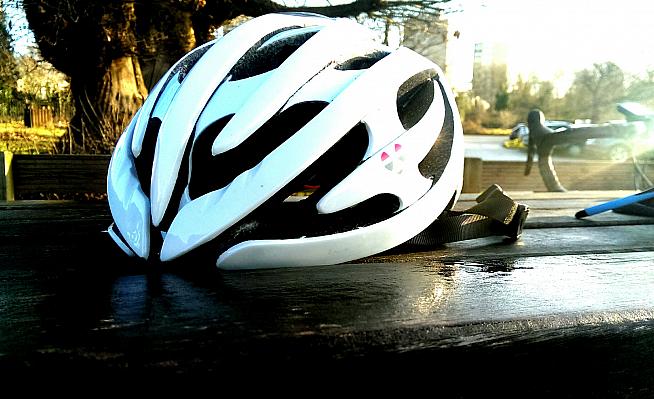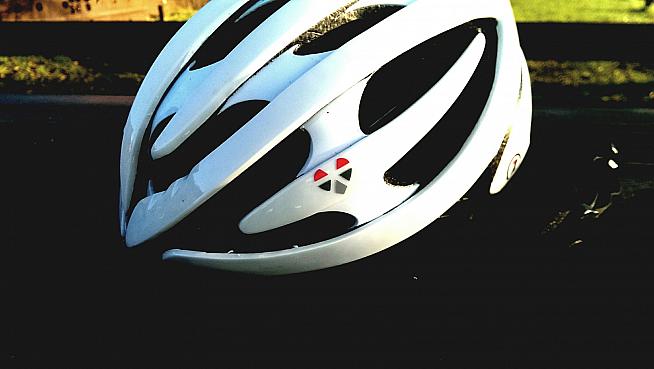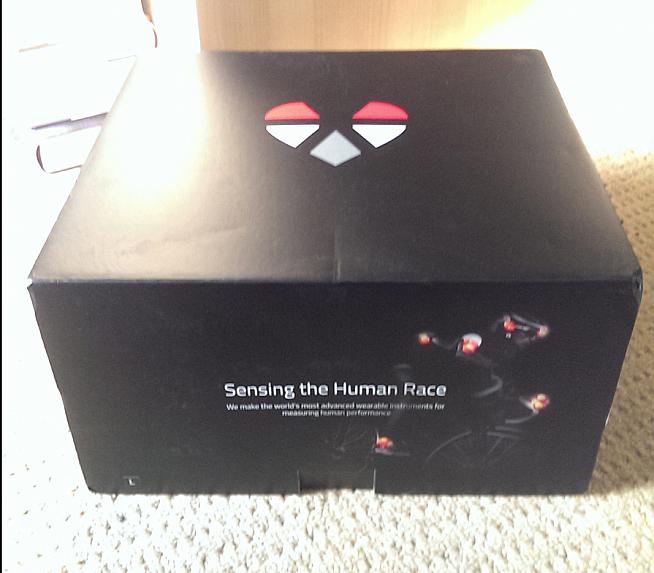If someone offers you a cycling helmet that features the latest aerospace technology as used by astronauts, you jump at the chance.
In my case so much so that I resorted to measuring my head there and then using two sheets of A4 paper and an iPhone charger cable. A low-tech solution, admittedly, but it meant I could get my size right and order the Genesis Lifebeam helmet from Lazer immediately. Which I did, then eagerly awaited its arrival.
What's so special about this helmet? Let me explain.
Based on a standard Genesis helmet from Belgium's Lazer brand, the Lifebeam carries a significant electronic upgrade: an integrated rear light and its standout feature, a heart rate monitor.
There are plenty of reviews out there for the standard Lazer Genesis. It's a good helmet; not top tier in terms of lightness or aero effect, but definitely in the second rank. It's good looking too, with nice lines, and comfortable. The Lazer Rollsys adjustment method works well - I find it better than the Roc Loc on my standard Giro.
The added kit doesn't add much to the weight either. The Lifebeam tips the scales at 320g, which is really close to the weight of the standard helmet - the difference is less than the weight of a chest strap heart rate monitor.
But weight is a side issue. If you're buying this helmet you're spending quite a lot more than you need to for an equivalent lid, and it's for one reason only - the heart rate monitor. So the real question is, does it work?
Set up
Setting up the Lifebeam genuinely couldn't be easier. You plug the helmet in to charge it (an odd sentence to write, I'll admit), then turn it on. There's a button at the back for that, resulting in a beep and a rather futuristic blue light coming on.
After that, put the helmet on and you're done. Both my Garmin 800 and my Android smartphone picked it up without the slightest problem, thanks to the helmet broadcasting in ANT+ and Bluetooth.
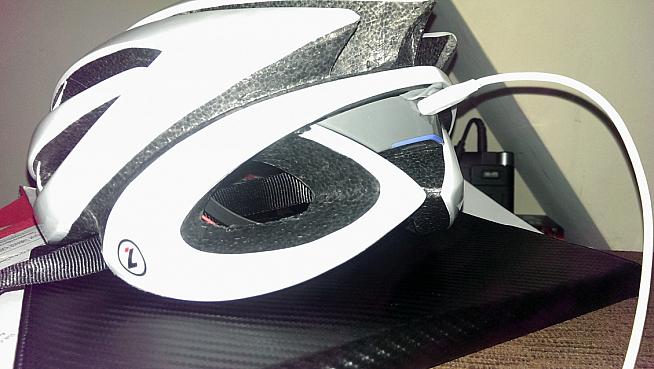
Using it
Once on and broadcasting, the heart rate readings from the Lifebeam are accurate compared with a standard chest strap heart rate monitor, as far as I can tell.
It worked when I was hot and sweating, it worked when I was cold, and it worked in the rain. Now and again the heart rate would drop out, but it nearly always came back a moment or two later, and the collected data post ride wasn't compromised by this.
Unlike a chest strap, there was no problem with it slipping down and it doesn't need to be wet to return a signal. It does, however, need to be tight to the skin - and that presents an interesting issue.
After a cafe stop mid-ride the first time I took it out, I discovered that the heart rate monitor in the helmet strap had left a somewhat interesting indentation on my forehead. I hadn't realised while I was riding because the helmet is not uncomfortable on the forehead; most of the time it's unnoticeable, but the dent is unsightly and takes a while to go.
Trying to avoid this on the return leg I loosened the helmet, which resulted in it reporting my heart rate approximately 11 bpm higher than it actually was - albeit consistently, so you could still measure your effort.
I re-tightened the helmet and it started reporting accurately again. With the accompanying indentation once again there when I took the helmet off.
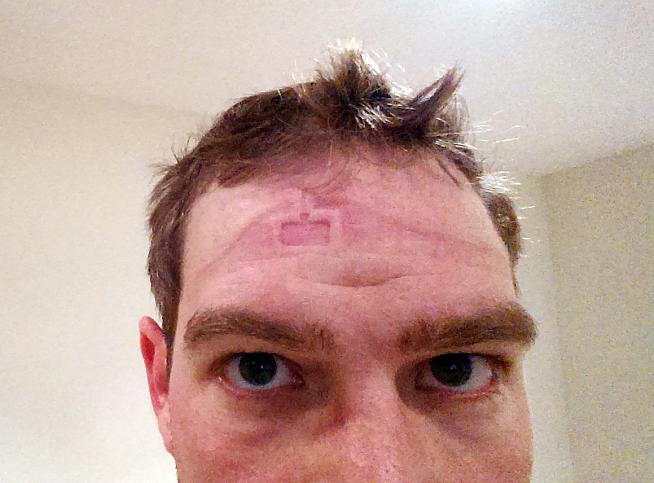
No one else has reported this, and I wonder if it's thanks to a change in the design of the heart rate monitor compared with older versions. It means that you look like a bit of an idiot for a while after the helmet's been taken off - not an issue on a cafe ride or a training session, but if you are riding to work you'd better not have any early meetings planned.
That's a shame, as one of the things I was quite excited about was the ability to put it on when riding to work to get a bit more data and let me use the time to train better. With the built-in light I had high hopes that the Lifebeam could be a perfect commuting helmet. That's not really an option considering the head-dent it leaves.
Other features
As already mentioned, alongside the heart rate monitor the Lifebeam features a rear-facing red light at the back of the helmet. This light is an optional extra on the standard Genesis but, as far as I can tell, on the Lifebeam it's powered from the central battery, meaning it's rechargeable.
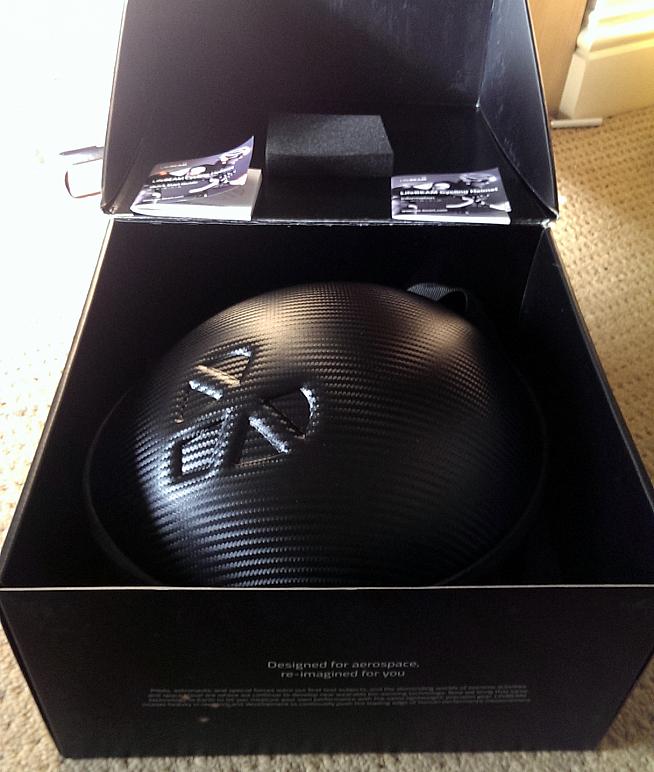
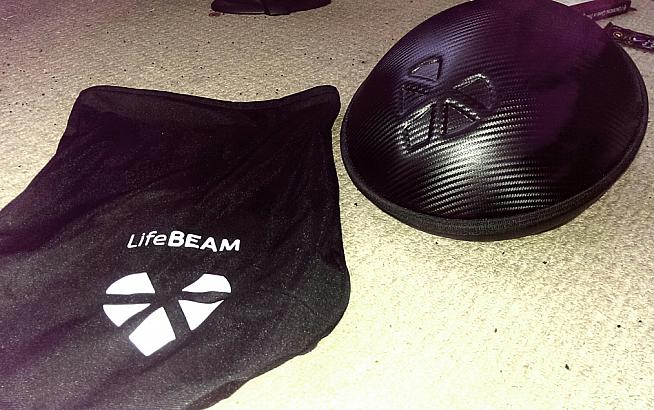
When you're designing in a battery and electronics on a helmet, I guess why not include a light. It's a classy touch though, and typical of how well thought through this product is.
Other nice touches include a helmet bag and protective carbon carry case for transporting the helmet. The carry case also include a space for the charging cable. Because, let's not forget, this is just about the only helmet I've ever come across that you plug in.
Verdict
Viewed purely as a helmet the Lifebeam is good, but not great. As a package it's a clever concept and there are some classy touches, like the integrated rear-facing light and helmet bag. The heart rate monitor is accurate, and the Lifebeam may be ideal for people who don't want the hassle or don't like the feel of a chest strap.
On the downside, it's not cheap - you can pick up a standard Lazer Genesis helmet and a separate heart rate monitor for less. Essentially, you're paying for the convenience of a heart rate monitor you can just put on your head. The trade off for that is that you can't wear it with a cap or any other head-covering between your forehead and the sensor - and of course, the fact it leaves a dent in your forehead.
There are also limited sizes (medium and large only) and just one colour (white) at present.
Will I keep using it? Yes, absolutely when out training or riding. It's a lot easier than putting on a chest strap. Would I buy it? In its current form and price, probably not.
Lazer Genesis Lifebeam helmet, £187 (€250) from www.lazersport.com
0 Comments






